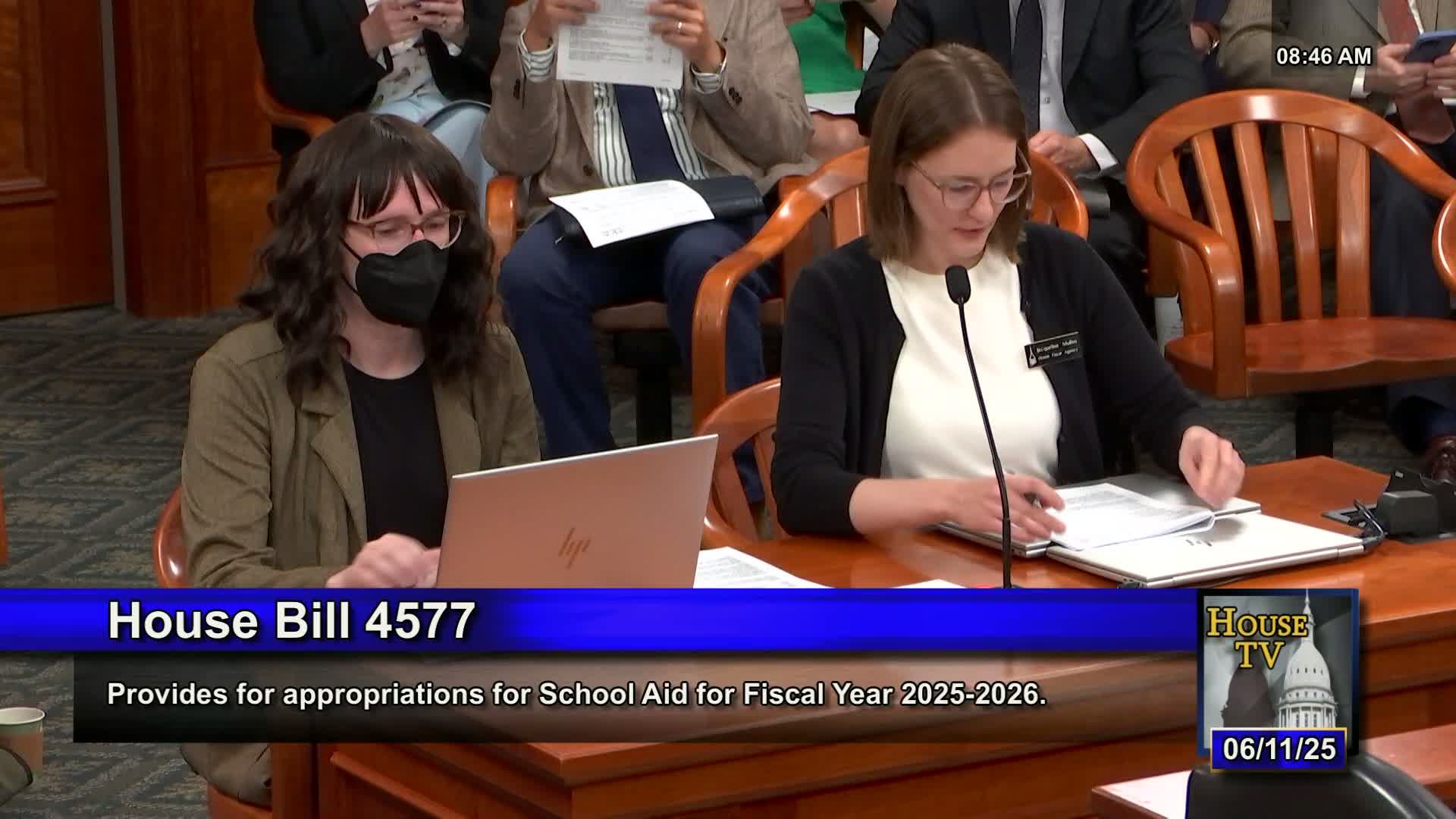House committee proposes $21.9B school aid budget with significant per pupil increases
June 11, 2025 | Appropriations - School Aid and Education, Appropriations, House of Representative, Committees , Legislative, Michigan
This article was created by AI summarizing key points discussed. AI makes mistakes, so for full details and context, please refer to the video of the full meeting. Please report any errors so we can fix them. Report an error »

The Michigan House has proposed a significant increase in school aid, recommending a total budget of $21.9 billion for the upcoming fiscal year, marking a $1.1 billion or 5.5% increase from the previous year. This proposal, outlined in House Bill 4577, aims to enhance funding for public education across the state.
A key feature of the proposal is a per pupil funding increase from $9,608 to $10,025, which includes support for cyber schools, contrary to previous recommendations that suggested reducing their funding. Additionally, the plan introduces an extra per pupil payment that could raise funding to as much as $12,000 per pupil for certain districts, alongside an estimated $228 per pupil for Intermediate School Districts (ISDs).
The budget also emphasizes safety and mental health in schools, mandating that districts employ at least one school resource officer and one mental health support staff member. This requirement extends to non-public schools, which may share resources with local districts.
To ensure stability, the proposal includes a "hold harmless" payment to protect districts and ISDs from potential funding reductions due to budget adjustments, totaling approximately $138.8 million. Furthermore, one-time funding from the school consolidation and infrastructure fund will support various initiatives, including competitive grants for infrastructure projects and incentives for reducing class sizes.
In a notable shift, the House plan maintains the unfunded liability cap for the public school employees retirement system at 20.96%, meaning districts will continue to bear this cost without state support. The budget also proposes closing several reserve funds, redirecting their remaining balances into the school aid fund, which is expected to bolster overall funding for education.
The proposal includes new boilerplate language that modifies pupil membership definitions and removes caps on shared time enrollment, allowing districts greater flexibility in accommodating students. Additionally, it introduces penalties for districts that do not comply with specific curriculum guidelines related to race and gender, imposing a 20% penalty on discretionary funding for non-compliance.
As the House moves forward with this budget proposal, the implications for Michigan's educational landscape are significant, promising increased resources for schools while also introducing new compliance measures that could reshape educational practices across the state.
A key feature of the proposal is a per pupil funding increase from $9,608 to $10,025, which includes support for cyber schools, contrary to previous recommendations that suggested reducing their funding. Additionally, the plan introduces an extra per pupil payment that could raise funding to as much as $12,000 per pupil for certain districts, alongside an estimated $228 per pupil for Intermediate School Districts (ISDs).
The budget also emphasizes safety and mental health in schools, mandating that districts employ at least one school resource officer and one mental health support staff member. This requirement extends to non-public schools, which may share resources with local districts.
To ensure stability, the proposal includes a "hold harmless" payment to protect districts and ISDs from potential funding reductions due to budget adjustments, totaling approximately $138.8 million. Furthermore, one-time funding from the school consolidation and infrastructure fund will support various initiatives, including competitive grants for infrastructure projects and incentives for reducing class sizes.
In a notable shift, the House plan maintains the unfunded liability cap for the public school employees retirement system at 20.96%, meaning districts will continue to bear this cost without state support. The budget also proposes closing several reserve funds, redirecting their remaining balances into the school aid fund, which is expected to bolster overall funding for education.
The proposal includes new boilerplate language that modifies pupil membership definitions and removes caps on shared time enrollment, allowing districts greater flexibility in accommodating students. Additionally, it introduces penalties for districts that do not comply with specific curriculum guidelines related to race and gender, imposing a 20% penalty on discretionary funding for non-compliance.
As the House moves forward with this budget proposal, the implications for Michigan's educational landscape are significant, promising increased resources for schools while also introducing new compliance measures that could reshape educational practices across the state.
View full meeting
This article is based on a recent meeting—watch the full video and explore the complete transcript for deeper insights into the discussion.
View full meeting
